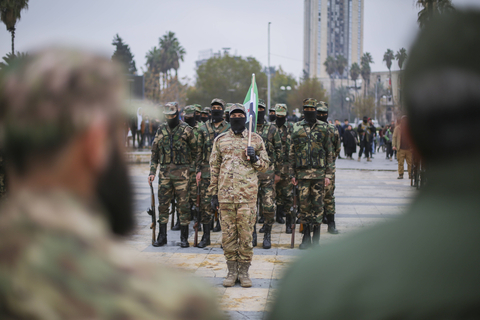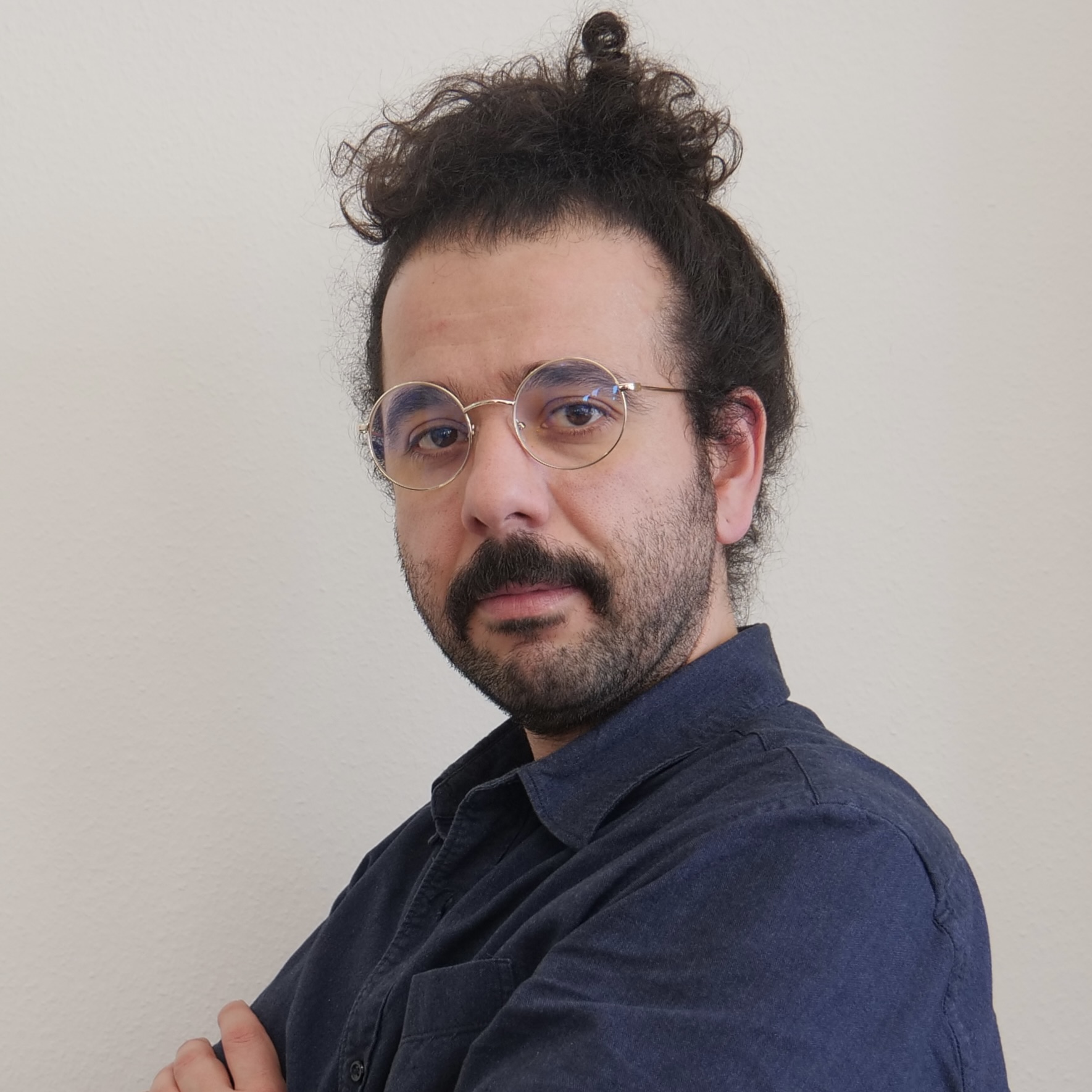Editor note: This article was originally published on The Rosa-Luxemburg-Stiftung, Beirut Office.
The Syrian opposition’s military operation that led to the remarkable collapse of the Assad regime on December 8 drew attention to Hayet Tahrir al-Sham (HTS), the group that led the offensive and has since assumed power. Understandably, much of this attention has been focused on the group’s radical past and previous links to the Islamic State IS and al-Qaeda and how they might affect its leadership’s future direction in ruling the country. While legitimate and important, these concerns stir the focus away from the pressing question of how HTS has survived more than a decade of intractable conflict, during which the country has witnessed the emergence, demise, and reconfiguration of many other groups. Answering this question could provide a broader understanding of the group’s constantly evolving worldview and may offer a glimpse into the future direction of its leadership.
A close look at HTS’s trajectory reveals a strong sense of pragmatism and adaptability, fueled by its leadership’s drive for survival and hunger for power. These defining traits have allowed the group to overcome multiple challenges, ensured its survival, aneventually assumed power over Syria today – a position it appears to maintain to this day.
Leaving ISIS
For starters, HTS, initially known as Jabhat al-Nusra (JN), was established in 2011 as the clandestine Syrian branch of the Islamic State in Iraq (ISI), which was led by Abu Bakr al-Baghdadi. JN’s growing popularity, stemming largely from its disciplined fighters and effective collaboration with local Islamist factions against the Syrian regime, along with the ambition for independence of its leader, Abu Muhammad al-Jolani (better known as Ahmad al-Sharaa), prompted Baghdadi to bring this increasingly self-confident Syrian wing back under his direct leadership. In April 2013, Baghdadi unilaterally dissolved both JN and ISI to merge them into a new group called the Islamic State in Iraq and al-Sham (ISIS). Al-Jolani refused and instead pledged allegiance to al-Qaeda, which was theoretically the parent organization of both groups. This move prompted thousands of foreign fighters to defect to ISIS. It sparked a power struggle that eventually led to open conflict between the al-Jolnai’s group and ISIS that has lasted until today.
Shifting allegiance to al-Qaeda revealed an early sign of its leadership pragmatism. When asked about his decision to join al-Qaeda after leaving ISIS, al-Jolani told Martin Smith in 2021 that he needed the “symbolism” of al-Qaeda leader Ayman al-Zawahiri. As one of the most respected figures in the jihadi-Salafist movement, al-Zawahiri would give JN the legitimacy needed to mitigate the fallout of breaking away from ISIS. Indeed, there was little to suggest that ideological considerations prompted this move, which was arguably a clear attempt by al-Jolani to escape ISIS’s control while minimizing the damage of leaving it behind.
Notwithstanding the differences between ISIS and al-Qaeda regarding the timing of establishing the caliphate and the nature and frequency of violence against opponents, JN still operated within the realm of jihadi-Salafism. Generally speaking, jihadi Salafis believe that violence is the only way to achieve socio-political change and that Shari’a law should serve as the sole source of legislation. Consequently, they view both democracy and the national state system as religiously illegitimat since these rely on man-made positivist laws. They also impose takfir—excommunication—on those they consider not to adhere to what they define as “true” Islam. For example, states are deemed infidel for not applying Shari’a law as their sole source of legislation.
Leaving Al-Qaeda
Carrying the al-Qaeda label came at a high price for JN. The US intensified its airstrikes, other local armed factions raised concerns about cooperating with the group, and ISIS launched military offensives to drive JN out of northeastern major cities such as Deir ez-Zor. All these factors pushed the pragmatic al-Jolani to adjust his strategy and reconsider his decision to represent AQ in Syria. In July 2016, he appeared in a video revealing his face to the public for the first time and announced that all operations under the JN banner were canceled in favor of forming Jabhat Fatah al-Sham (JFS). The international community, however, continued to classify it as a terrorist organization, and most local factions refused to merge with it, fearing international isolation and strained relations with supporting states.
The logic behind divorcing al-Qaeda, merging with local factions, and embedding itself within the Syrian opposition was largely driven by the group’s leadership’s desire to remove itself from international terrorism lists. This strategy would ensure its survival and help avoid strikes from the US-led international coalition, which had inflicted significant damage on ISIS and, to a lesser degree, on JFS. After an intense round of negotiations, the group managed to secure a merger with three local factions—Liwaa al-Haqq, Jaysh al-Sunnah, and Ansar al-Din—culminating in the establishment of Hayat Tahrir al-Sham (HTS) in 2017.
HTS, the last rebranding
The establishment of HTS was a watershed moment for the group, marking the beginning of a gradual shift from jihad to politics. To facilitate this transition, it set up its semi-technocratic Salvation Government, which has received substantial criticism for its performance and lack of transparency due to HTS’s top-down approach to governance. Additionally, the group established its General Security apparatus, which has played a significant role in quashing dissent against the leadership and maintaining economic dominance in the region.
On the military front, the group sought to monopolize violence in its areas of operation and control. Between 2017 and 2022, HTS fought and defeated its former allies among local Islamist groups—such as Nour al-Din al-Zinki and Ahrar al-Sham—depriving them of the economic lifeline provided by the Idlib Bab al-Hawa crossing. It also put an end to Hurras al-Din, an al-Qaeda affiliate established by a top al-Qaeda loyalist who defected from HTS after its divorce from al-Qaeda, rejecting HTS’s ruthless pragmatism.
HTS leadership recognized that the nation-state system was the only viable framework for survival, necessitating cooperation with state actors. By 2017, HTS began establishing relations with Turkey—a state that was considered an infidel due to its secular nature. Additionally, HTS expelled senior members who still held old, extreme jihadi-Salafist views, especially those who rejected cooperation with Ankara. Ironically, HTS had previously fought local groups for accepting Turkish support and participating in Astana political talks about Syria, in which Ankara acted as guarantor. Additionally, HTS has shared intelligence with NATO through Turkey to target high-value targets of IS and al-Qaeda, signaling its readiness to become a partner with the international community war on terror.
On the ideological level, HTS leadership has actively sought to dominate the religious sphere in Idlib and reshape the ideological orientations of its ranks. In March 2019, HTS established the Supreme Council of Fatwa—managed by al-Jolani’s advisers—to monopolize fatwa production (formal rulings or interpretations of Islamic law by qualified scholars). This central religious authority was designed to diminish the influence of global jihadi-Salafi ideologues and curb the sway of the remaining extremists within the group. Notwithstanding these efforts, hardline views within HTS’s rank and file still exist today, especially when it comes to applying democracy and dealing with other sects.
HTS in power
For more than a year before the operation that toppled Assad, HTS-controlled areas in north west Syria witnessed public demonstrations calling for the removal of al-Sharaa, the release of detainees—many of whom had been tortured—and the establishment of an inclusive governance system. Paradoxically, HTS’s response was relatively restrained, with few casualties reported and only superficial reforms implemented. With HTS’s operation toppling Assad, al-Jolani transformed himself into a hero and put his adversaries in a delicate position where they must either comply with his rule or remain sidelined.
The international community finds itself in a dilemma on how to proceed. On one hand, toppling Assad was a desired outcome for most of its members, but having HTS, with its radical past, lead this effort complicates their calculus. Nevertheless, examining HTS’s trajectory reveals that the group is primarily driven by its leadership’s ambition for survival and hegemony. HTS has engaged in conflicts with various factions that possess different political and ideological backgrounds, suggesting that the group is not strongly committed to any specific ideological principles. In other words, it is largely politics that drive the group’s behaviors.
Driven by political calculation, HTS leadership has genuinely changed over the last decade. While hardline elements still operate under the group’s banner, its leadership’s strive for rule that requires an inclusive, national direction is likely to prevail. HTS’s pragmatism is a double-edged sword; on the one hand, it means that al-Sharaa is willing to adopt new positions on issues such as women and minorities, but on the other, he might be ready to go to extreme lengths to stay in power.
1 The group has been known by different names corresponding to distinct periods—ISI (Islamic State of Iraq)
from October 2006 to April 2013, ISIS/ISIL (Islamic State of Iraq and al-Sham) from April 2013 to June 2014,
and IS (Islamic State) from June 2014 to the present.
2 Martin Smith, an American journalist and producer, made a documentary about HTS and its leader titled “The
Jihadist” in 2021.


